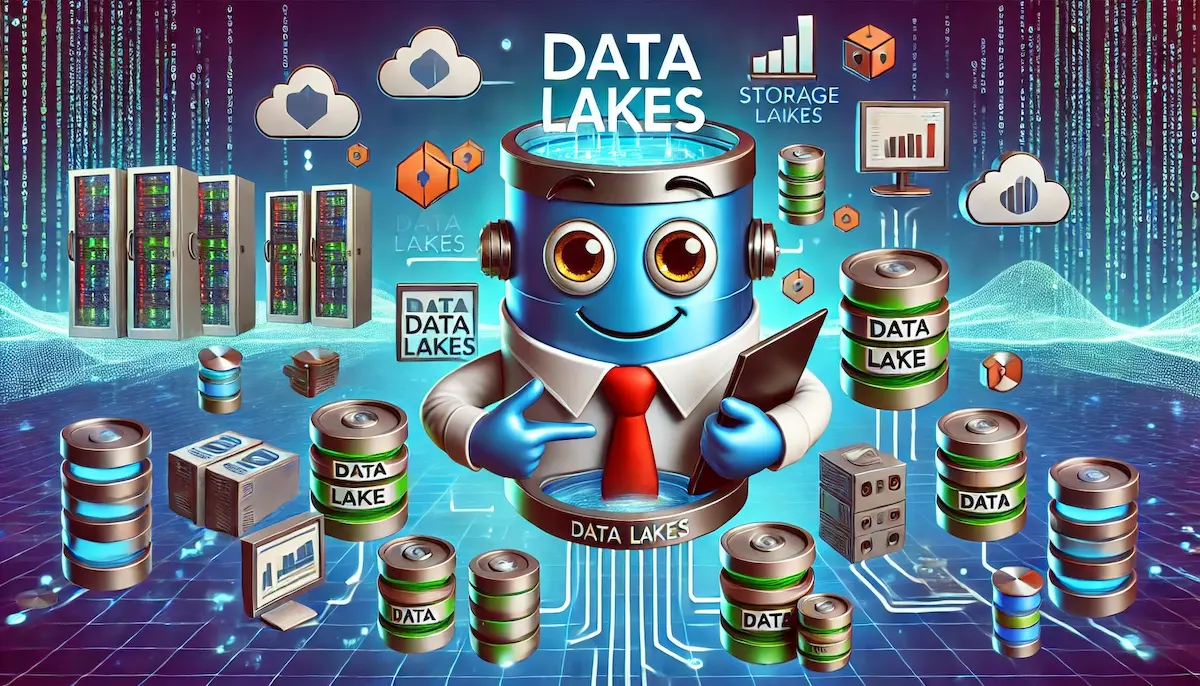Data lakes are a modern data storage solution designed to hold vast amounts of raw data in its native format until it is needed. Unlike traditional data warehouses, which store structured data in predefined schemas, data lakes can store structured, semi-structured, and unstructured data, offering greater flexibility for data analysis and management.
What is a Data Lake?
A data lake is a centralized repository that allows organizations to store all their structured and unstructured data at any scale. It can include data from various sources, such as databases, logs, social media, and IoT devices. The data is stored in its raw form, allowing for future analysis using various tools and technologies. Data lakes are designed to handle the volume, variety, and velocity of big data, providing a scalable and cost-effective solution for data storage.
Key Features of Data Lakes
Data lakes have several key features that distinguish them from traditional data storage solutions:
Scalability
Data lakes are built on scalable storage systems, often using cloud-based platforms like Amazon S3, Microsoft Azure Blob Storage, or Google Cloud Storage. This allows organizations to easily scale storage capacity up or down based on their needs, accommodating massive amounts of data without significant upfront investment.
Flexibility
Unlike data warehouses, which require data to be transformed and loaded into predefined schemas, data lakes can store data in its original format. This flexibility supports a wide range of data types, including structured data (e.g., relational databases), semi-structured data (e.g., JSON, XML), and unstructured data (e.g., text, images, videos).
Cost-Effectiveness
Data lakes often use cost-effective storage solutions that allow organizations to store large volumes of data at a lower cost compared to traditional data warehouses. This makes data lakes an attractive option for businesses dealing with big data.
Advanced Analytics
Data lakes support advanced analytics, including machine learning, artificial intelligence, and big data processing. Tools like Apache Hadoop, Spark, and Flink can be used to process and analyze data directly within the lake, enabling sophisticated data analysis and insights.
Data Integration
Data lakes can integrate data from various sources, providing a unified view of the organization’s data. This integration enables comprehensive analysis across different data types and sources, breaking down data silos and promoting data-driven decision-making.
Benefits of Data Lakes
Data lakes offer numerous benefits that enhance data storage, management, and analysis capabilities:
Comprehensive Data Storage
Data lakes allow organizations to store all their data in one place, regardless of type or source. This comprehensive storage facilitates a holistic view of the data, enabling more thorough analysis and better insights.
Faster Time to Insights
By storing data in its raw form and enabling on-demand processing, data lakes reduce the time required to prepare and analyze data. This faster time to insights helps organizations respond more quickly to changing business conditions and opportunities.
Support for Advanced Analytics
Data lakes provide the infrastructure needed for advanced analytics, including machine learning and real-time data processing. These capabilities enable organizations to extract deeper insights from their data and drive innovation.
Enhanced Data Governance
With proper data governance policies and tools, data lakes can enhance data quality, security, and compliance. Metadata management, data cataloging, and access controls help ensure that data is trustworthy and used appropriately.
Agility and Innovation
The flexibility and scalability of data lakes support agile data management practices, allowing organizations to experiment with new data types and analysis techniques. This fosters a culture of innovation and continuous improvement.
Challenges of Data Lakes
Despite their advantages, data lakes also present several challenges that organizations must address:
Data Quality and Governance
Ensuring data quality and governance in a data lake can be challenging due to the diversity and volume of data. Without proper controls, data lakes can become “data swamps” with disorganized, low-quality data. Implementing robust data governance practices is essential to maintain data integrity and usability.
Complexity of Integration
Integrating data from various sources and formats can be complex, requiring significant effort to ensure consistency and compatibility. Organizations need to invest in data integration tools and expertise to manage this complexity effectively.
Performance Optimization
Querying and processing large volumes of raw data can impact performance. Optimizing data storage and retrieval processes, such as partitioning and indexing, is necessary to maintain efficient performance.
Security and Compliance
Storing vast amounts of sensitive data in a data lake requires stringent security measures to protect against data breaches and ensure compliance with regulations. Organizations must implement strong access controls, encryption, and monitoring to safeguard their data.
Skill Requirements
Effective management and utilization of data lakes require specialized skills in big data technologies, data engineering, and data science. Organizations need to invest in training and hiring the right talent to maximize the benefits of their data lake.
Conclusion
Data lakes are a powerful and flexible solution for storing and managing large volumes of diverse data. By enabling comprehensive data storage, advanced analytics, and faster time to insights, data lakes support data-driven decision-making and innovation. However, to realize these benefits, organizations must address challenges related to data quality, integration, performance, security, and skills. With the right strategies and tools, data lakes can transform how organizations leverage their data for strategic advantage.
Blockfine thanks you for reading and hopes you found this article helpful.
